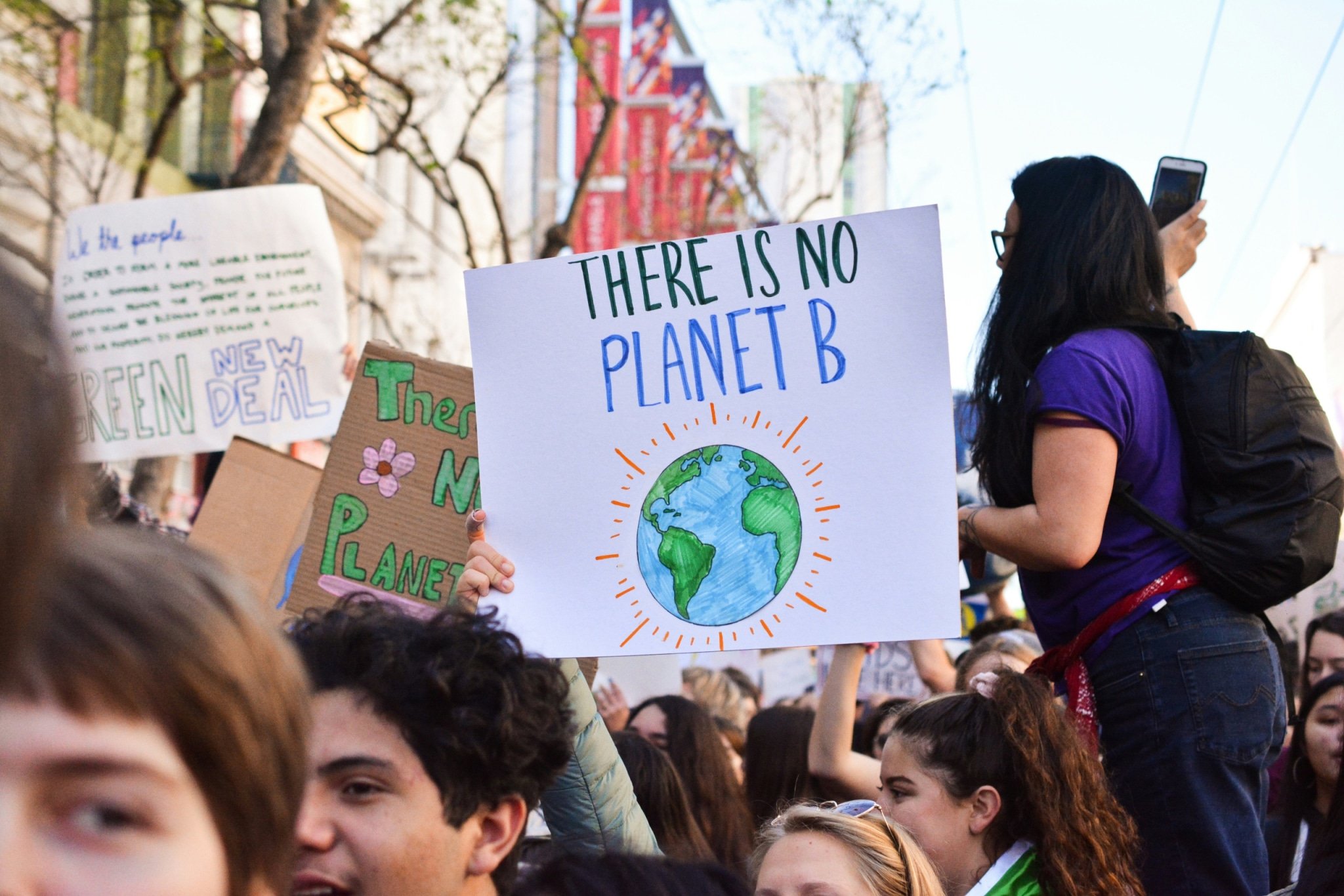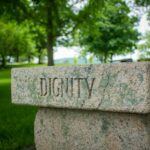
Humans of Nonprofits is a storytelling series that explores how nonprofits shape and support the lives of everyday people. Each story shares an authentic, lived experience, revealing the many ways nonprofits intersect with individuals across all backgrounds, beliefs, and communities. Regardless of politics, religion, gender, or geography, nonprofits are a vital thread in the fabric of daily life.
“I tell my kids all the time—we’re never leaving. We have the best neighbors. The kind that hide Christmas presents at their houses, scatter Easter eggs across the block, and come over if someone knocks at our door and I don’t feel safe. That kind of community—it’s rare,” Karen told NPQ in an interview.
Karen is a single mom of two and a longtime educator. Born and raised in Tampa Bay, FL, she’s now raising her own kids not far from where she grew up. “I still work in the same district I went to school in,” she said, an understated pride bubbling up through her words. “I taught in the classroom for 15 years. Now I coach teachers and develop training across 12 public schools. Every day is different.”
Beneath the familiar chaos of her daily life is something less visible: A quiet, constant interaction with a web of nonprofits. From healthcare and education to emotional support and hurricane recovery, Karen’s story reveals how much nonprofits are deeply interwoven into the fabric of our communities—often unnoticed until they’re needed the most.
That’s the heart of Humans of Nonprofits: revealing the impact of nonprofits hidden in plain sight, so integrated into daily life that we often forget they’re there.
Beyond Teachers and Textbooks: Support Systems You Don’t See
“Every day starts at 6:30. I get up, make breakfast, wake the kids, pack the lunches, and coordinate getting them to two different schools, which are 30 minutes apart and start at almost the same time,” Karen said, laughing and shaking her head at the chaos of her schedule. “There’s no bus service available for either. It takes a carpool crew and a community of support to make it work.”
Her son attends a public fundamental middle school—a magnet program emphasizing home and school partnerships to support student achievement. Because enrollment in these schools is voluntary, the district is not required to provide transportation. Like all parents at the school, Karen is required to attend either Parent Teacher Association (PTA) or School Advisory Council meetings, and she volunteers regularly at the school.
“It’s a commitment,” she said, “but it’s also one of the only ways to stay connected in middle school.” That kind of parent engagement isn’t just helpful—it’s nonprofit governance in action. Many PTAs, school foundations, and advisory councils operate as community-based nonprofits. They raise funds, organize events, and support school culture in ways that might not happen without the organization. “We don’t always think of them that way,” Karen reflected, “but they’re essential.”
Karen’s neighborhood functions like an informal nonprofit; volunteers offer time, space, and support to create something meaningful together.
Her job with the school district puts her in contact with even more nonprofit partnerships. “There’s a volunteer program everyone affectionately calls ‘the grandmas,’” she explained. “They’re mostly retired women trained to support early reading skills. They pull kids into small groups, build relationships. The kids adore them. Everyone calls them ‘Grandma.’” This program is part of a larger volunteering initiative that brings 30,000 volunteers into US schools annually.
Nationwide, volunteers contribute an estimated 5 billion hours of service each year, valued at over $167 billion, according to a 2024 Independent Sector report.
Locally, in Karen’s community, there’s also Pack-A-Sack, a weekend food security program run by the local churches. “It’s consistent,” she said. “Every Friday, those bags go home, and those children know they have food to rely on.”
The Kiwanis program Bringing Up Grades (BUG) also supports academic mentoring. Adult volunteers and teachers work with students to set goals and celebrate improvements. “Sometimes it’s as simple as lunch and throwing a football around. But the relationship, having someone to talk to, it makes a difference,” Karen explained.
Every school also has a community liaison whose role is dedicated to building connections between the school and the community. “They coordinate food drives, secure donations, and make sure families in crisis have what they need,” Karen said. “They’re a lifeline.” These liaisons are often partially paid for by grants rather than fully supported by the district.
Neighbors, Coaches, and Clinics: The Support of Community Nonprofits
By mid-afternoon, Karen’s carpool crew returns home. “When we are fostering puppies, we take them out first, then the kids start homework while I finish my work,” Karen said.
The puppies are part of her volunteer work with FLUFF Animal Rescue, a volunteer-run nonprofit that saves dogs from high-kill shelters and arranges adoptions. “They won’t let you take just one puppy—you have to take at least two,” she said. “I couldn’t take care of puppies on my own. My neighbors help me. We have a system of five different households that pitch in with feeding and walks.”
Karen’s neighborhood functions like an informal nonprofit; volunteers offer time, space, and support to create something meaningful together. This group operates differently than the estimated 370,000 nonprofit homeowner associations (HOAs) in the United States. They de-emphasize governance and upkeep rules, instead centering their collective efforts on community building.
Individually, each nonprofit forms a thread in the critical network that helps our communities not just survive but thrive.
Later in the day, Karen hustles her kids off to tennis, basketball, or volleyball. “A lot of the coaches are volunteers,” she explained. “Some sports are organized by local nonprofits that partner with the community rec centers.”
Local youth nonprofits offer more than exercise; they provide consistency, discipline, and safe spaces after school. “They keep kids active and give them something to be proud of,” Karen noted, adding, “It makes it more affordable for families, which is really important as a single mom.”
Most households reside within 10 miles of a YMCA, a nonprofit that prioritizes youth sports and athletic engagement in 10,000 communities nationwide. Community leagues like those operated by the YMCA lower the pay-to-play barriers that lead to inequity in youth sports.
After practice, Karen usually hurries home to cook, part of a daily routine with a nonprofit thread running through it. “We cook almost every meal,” she explained, due to one of her children’s severe food sensitivities. She recalled the early days of navigating her child’s needs and the support they received at the Rothman Center, a specialty clinic within Johns Hopkins All Children’s Hospital.
It was this nonprofit health system that finally identified the child’s underlying condition triggered by certain foods. “It changed everything,” Karen said. “We went from daily stomachaches to real answers.”
Hurricanes, Homelessness, and Holding On
Like many Floridians, the 2024 hurricane season upended Karen’s life. “We had just discovered a slab leak at home. Then we got hit by back-to-back hurricanes. It was a lot all at once.”
Category 3 and 4 hurricanes hit the Tampa Bay area within weeks of each other, inflicting catastrophic damage estimated at over $5 billion dollars. Entire neighborhoods were destroyed. In the wake of the storms, nonprofits and local agencies mobilized quickly to meet urgent needs.
“Our schools became lifelines for displaced families,” Karen recalled. “Our district warehouse had everything—cat food, diapers, you name it. FEMA [Federal Emergency Management Agency] was here. Public health, EMS, churches, and the Red Cross. Everyone showed up.”
“Sometimes you’re the one giving. Sometimes you’re the one receiving. But that’s how we get through.”
Nonprofits are a cornerstone of disaster response in the United States. In 2019 alone, members of the National Voluntary Organizations Active in Disaster (NVOAD) coordinated nearly 10 million volunteers who contributed more than 48 million hours of service—valued at approximately $1.3 billion—to support response and recovery nationwide, according to a 2021 NVOAD report.
In the aftermath, people gave whatever they had. “Food trucks delivered free food. Boats ferried supplies and rescued people stranded by floodwaters. Neighbors helped neighbors clean up yards,” Karen reflected. “It was a true mess….But the hurricane brought people together in a way that everyday life doesn’t always allow.”
Everyday People, Everyday Nonprofits
When asked if she ever thought much about nonprofits before experiencing these crises, Karen paused. “Honestly, no,” she said. “I didn’t realize how many I interacted with. But nonprofits are everywhere.”
She’s right. Across the United States, there are more than 1.5 million formal nonprofit organizations—ranging from food banks and shelters to museums, credit unions, and social clubs. Collectively, the nonprofit sector contributes $1.4 trillion to the US economy each year and employs more than 10 percent of the country’s private sector workforce, according to the National Council of Nonprofits. Individually, each nonprofit forms a thread in the invisible network that helps our communities not just survive but thrive.
The people who power that network is what this column will highlight.
We asked Karen what she hoped people take away from her personal story. She thought for a bit, then said, “You just have to be there for your community. Sometimes you’re the one giving. Sometimes you’re the one receiving. But that’s how we get through. We’re not meant to do life alone.”














